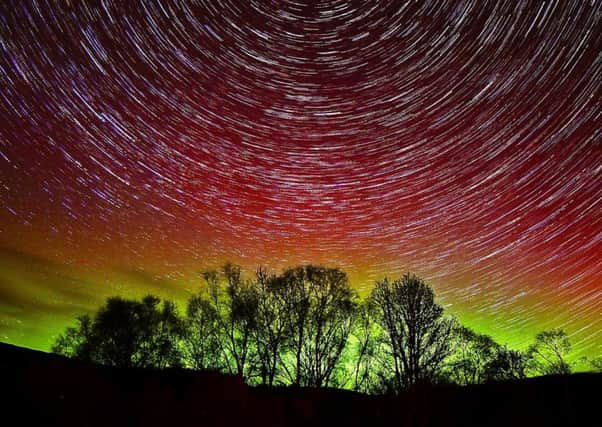Professor John Brown to show why Science and art are a match made in the heavens


But now Professor John Brown, 10th Astronomer Royal for Scotland, is ramping up his long-standing championing of sci-art collaborations, saying it is time to knock down the artificial divide between science and art to reveal the “sheer beauty of the cosmos”.
Brown was speaking ahead of the launch of his new book, Our Big Braw Cosmos, which is tipped to be a best-seller. Co-written with Lallans poet Rab Wilson, it combines astronomy and science with poetry, arts and photography.
Advertisement
Hide AdAdvertisement
Hide AdThe book is packed with scientific insights into a range of astronomical issues such as dark matter, planetary systems and blue moons. It highlights the contribution of Scottish scientists such as James Clerk Maxwell and Williamina Fleming.
However, it also showcases cosmic beauty and literary treasures such as poems about space by Edwin Morgan and a little known letter from Robert Burns to Agnes McLehose (written using the secret names Sylvander and Clarinda).
In it Burns imagines them escaping together to a remote planet “watching a comet flaming innoxious by us”.
Wilson has written 30 new poems for the book including ‘Musky’s Motor Caur’ about billionaire Elon Musk launching a Tesla sports car into space last year, and ‘Goldilocks and the Three Exoplanets’ describing the search for exoplanets deemed ‘not too cold and not too hot’, thus having the potential for a form of life.
Brown and Wilson will be reading extracts from the book today at an Edinburgh Science Festival event, Cosmic Beauty, Poetry and Science at the National Museum of Scotland in Edinburgh.
Brown said: “Some people think of science as dry but the cosmos is fabulous, incredible, astonishingly rich in shape, colour, beauty, movement and change.”
Wilson, who admitted having to read up about astronomy for some of the poems, said: “A poet can’t get a bigger canvas or challenge than the cosmos. With this being the UN International Year of Indigenous Languages and 50 years since the Apollo moon landing it is the ideal time to combine the cosmos and Scots.”
Advertisement
Hide AdAdvertisement
Hide AdAsif Khan, director of the Scottish Poetry Library in Edinburgh, said: “One of the reasons often given when people are asked why they don’t read poetry is that they believe it to be without practical application.
“In fact, as the new book by John C Brown and Rab Wilson demonstrates, there is quite a tradition of poets, not least in Scotland, who believe poetry can inform science.
“Certainly, a great number of them have proven fascinated by science.
“Hugh MacDiarmid thickened his verse with words taken from scientific and technical vocabularies.
“The first Makar of the modern era, Edwin Morgan, was famously fascinated by science and science fiction.
“For those intimidated by science, poetry might play a part in making the field more approachable, especially when expressed in Scots, a wonderfully expansive language.”
Oor Big Braw Cosmos, by John C Brown and Rab Wilson, will be released in late April by Luath Press, £25.